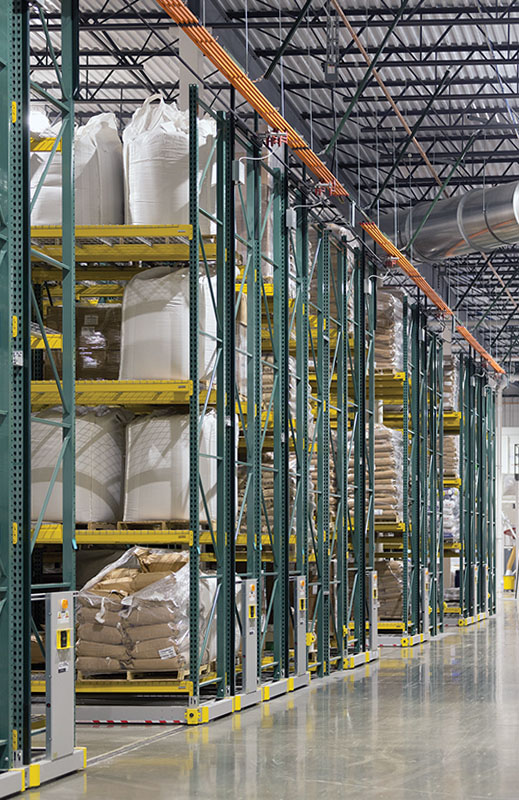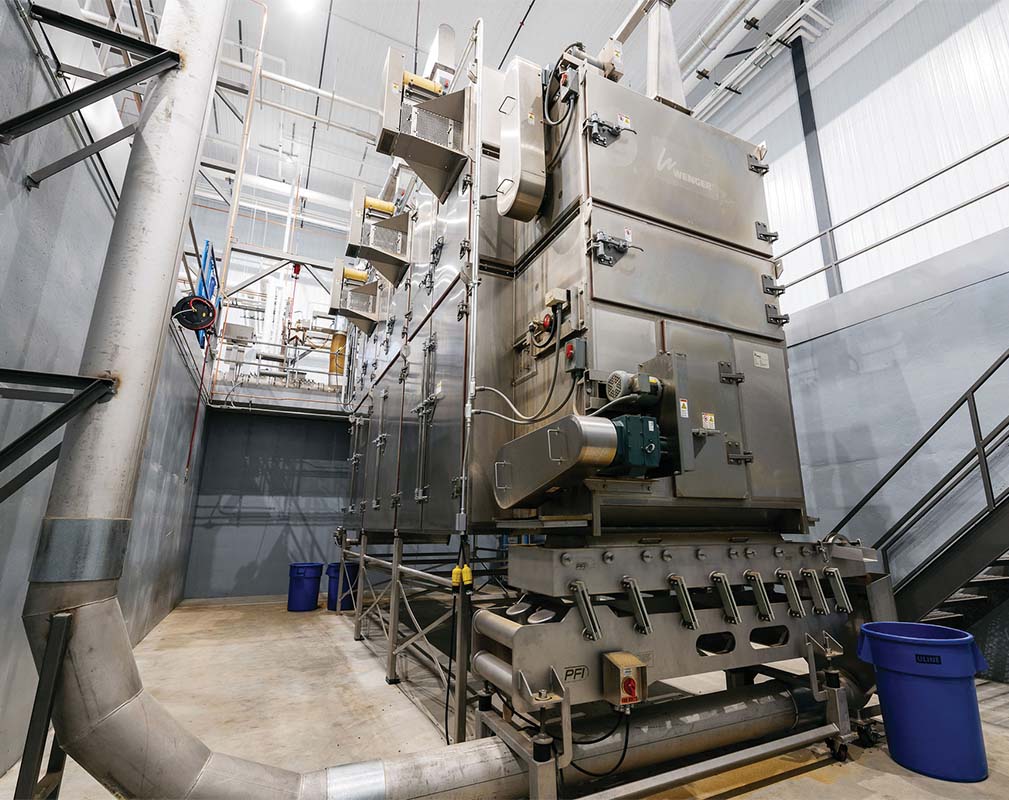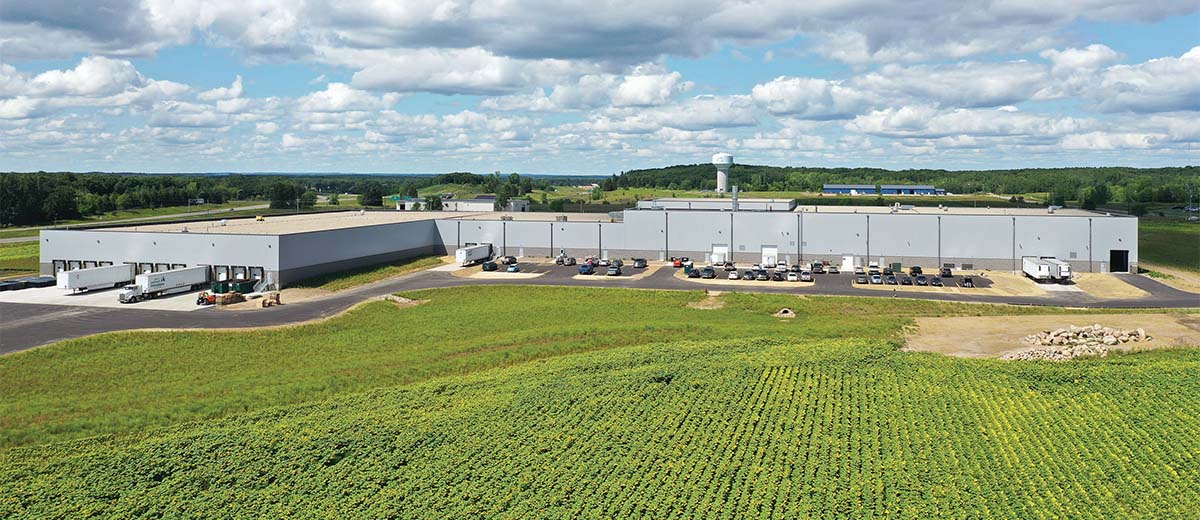This article was published in the March 2022 issue of Pet Food Processing. Read it and other articles from this issue in our March digital edition.
Demand for pet food and treats offers more reasons than ever for manufacturers and suppliers to consider growing and expanding their footprint. Readily available equity funds mean many are taking advantage of low interest rates. But the process of obtaining funding is specific to the business stage and requires an assessment of where the business is now and where it wants to be.
This present/future mindset starts with getting a credit facility in place before funding is needed. This is when the company is the strongest and the most likely to receive the most favorable terms, advised Stacey Huddleston, vice president, business development officer, Seacoast Business Funding, Boynton Beach, Fla.
But just because a bank is willing to lend the money doesn’t necessarily mean one’s business is ready, and a business does not want to be in a position where it is forced to sell equity, cautions Tom Barrett, co-managing director of Barrett Petfood Innovations, Brainerd, Minn.
Having skin in the game
Even with low interest rates, the process of obtaining financing and/or gap funding isn’t a quick process and companies should not expect to lock in 100% financing. Improper planning could also result in encountering more difficulty in finding less expensive funding and having to explore more expensive options such as non-bank-owned financing.
Barrett suggested starting with a strong finance department to help with financial projections, either in-house or partnering with a great accounting firm.
 Cashflow funding supports inventory management and can reduce the impact of supply chain challenges. (Source: Sosland Publishing Co.)“Don’t make a quick decision to take money or sell equity,” he continued. “Be sure you actually need the financing, know what your forecasting requires in terms of financing, and then explore your options.”
Cashflow funding supports inventory management and can reduce the impact of supply chain challenges. (Source: Sosland Publishing Co.)“Don’t make a quick decision to take money or sell equity,” he continued. “Be sure you actually need the financing, know what your forecasting requires in terms of financing, and then explore your options.”Lenders also need to have confidence in whom they are lending money. This starts with knowing what a company brings to the table including company financials, a business plan, a marketing plan if applicable, and cash flow projections for the next two to three years.
A good starting place is to work with the bank first and ask how to put the project together, inquire what the timelines are and do the same with the communities. Huddleston recommended companies have financials complete and ready to present to the lending provider when applying for financing. Don’t send in financial information piecemeal.
Honing the process
Banks prefer cash but will also look at existing land, buildings and equipment that are paid for or paid down enough to equal the equity injection. Typically, a bank will want at least 30% equity in a project. If a business is working with a state or city program, there will also need to be public hearings that can take 90 days once the information is received, shared Carol Anderson, executive director, Morrison County Community Development, Little Falls, Minn.
For example, when working with state funding, a business cannot order equipment, purchase the land (unless it’s already owned) or do anything until the application is submitted and signed off by the state. If equipment or a building is ordered, the business is essentially saying the project is moving forward. This will kill the funding for state or tax increment financing (TIF) programs, Anderson cautioned.
 Investment in equipment is a key part of financial planning and overall equity of the business. (Source: Sosland Publishing Co.)
Investment in equipment is a key part of financial planning and overall equity of the business. (Source: Sosland Publishing Co.)
Offered by communities and states, TIF is used for building demolition and/or construction. The program looks at the value of the parcel of land as it is presently and then what the value would be with improvements on the land. This is based on tax value and the difference in the taxes generated can be rebated to the company when it’s time to pay property taxes.
Funding through TIF can be used in a variety of ways including land purchase, footings, foundations and parking lots – anything that’s in the ground or directly on the ground. A company using TIF cannot apply to have its taxes lowered once it’s asked for a larger amount of value for generated funding.
Planning should include allowances for supply chain disruptions, errant or rising costs, and other potential pitfalls that could pop up along the way. Businesses can also find themselves in a tight spot if they take on too much debt, hampering cash flow for an extended period of time. This could create the potential that the “lowest cost” option could come with the most restrictions, limiting the ability to grow one’s business.
Anderson also recommends not doing press releases announcing a business is located in a community. This is important because of the “if but for” clause, meaning the business is saying to the community and/or state that the project cannot be done without this funding.
“While it’s time consuming to put the financing together, it’s worth it in the long run,” she continued. “Many programs lock in low interest rates that are beneficial to a company’s cash flow. Additionally, most communities are very welcoming to new business coming into their town and region and are willing to work with a company to assist them with their needs.”
Available funding
With a number of options available, it’s important to consider the pros and cons of each and to receive multiple options to negotiate the best terms for an individual situation. For instance, while a bank may be a more traditional choice for a mature company, government programs could offer better rates and a longer term. Programs for funding will also differ state-to-state and community-to-community.
The Small Business Administration (SBA) assists small business owners and entrepreneurs, providing counseling, capital and contracting expertise in addition to help with planning, launching, managing and growing a business. SBA has a variety of lending programs for businesses of all sizes.

Loans are made by a bank and then guaranteed by the SBA. The most popular types of loans can be used for a variety of purposes including working capital and inventory, but especially for expansion through purchasing or constructing new buildings and equipment. If the expansion or replacement of existing equipment is justified by exporting, even in portion, the loan guarantees are larger. The Export-Import Bank of the United States (US EXIM Bank) also makes these loans larger for exporting firms.
SBA 504 and SBA 7a loans can make it easier for a bank to lend to a larger deal or riskier credit. The SBA 504 loan, used for buildings and equipment, comes through a bank where the banking institution does 50% of financing, 40% as a direct loan from the SBA and 10% equity. The interest on the SBA portion is fixed for up to 25 years between 2% and 3%.
There are several lenders that offer an SBA 7a loan, where the bank receives the guarantee for up to 90% of the loan from the SBA and companies will need to report at least two to three years of positive cash flow. Huddleston cautioned that such a loan can be time consuming and often requires a blanket lien on a personal residence property.
Another form of government funding is rural business development grants through the US Department of Agriculture. These are only for projects benefiting rural communities and they often have specific requirements and are limited to populations of less than 50,000.
Funding is also available from an Asset Based Line or ABL. Bank-owned ABL funding is often available for mature and early-stage companies that may not meet the traditional bank policies. ABL is a line of credit that allows the borrower to monetize their Accounts Receivables (AR) inventory and sometimes equipment. These loans can be a great option from both bank-owned and non-bank-owned ABL lenders.
“Many early-stage companies may be sitting on AR and don’t realize they can monetize the AR with factoring/invoice financing,” Huddleston said. “Instead, early-stage companies will often raise capital and give up equity when they could have gone with a much less expensive option that doesn’t require positive cash flow.”
Invoice financing or factoring is a way to monetize a company’s AR instead of waiting 30 to 90 days for customer payment. A business can factor AR assets to meet present and immediate cash needs and the buyer makes a profit upon the settlement of the loan. Factoring is gaining traction with banks often having their own factoring department, because it’s easier to obtain funding compared to ABL financing.
“Cash flow is king,” Huddleston continued. “I cannot stress enough how important cash flow forecasting is to any businesses, which requires great Accounts Receivable collection practices.”
There are also special extra lending programs for firms that are exporting. Companies that need to expand or to change their manufacturing process can tap loans guaranteed by the SBA or US EXIM Bank that would allow for capital equipment, supplies, inventory and other expenses potentially necessary to expand sales into foreign markets, according to Laurie Wolff, distinguished fellow at NASBITE International on export assistance funding and instructor at Southern Illinois University at Edwardsville.
When owners don’t have enough equity, “gap lenders” can help fill the difference. The funding provides an amount of money needed to fund the ongoing operations or future development of a project or a business and typically takes a secondary position behind the bank on the collateral, Anderson shared. This gap also might be addressed through venture capital and/or additional investors.
If a business doesn’t qualify for a traditional loan because of a brief business history and/or low credit scores, there is the option of a merchant cash advance (MCA). Although the MCA is easy to obtain, the advance contains high costs and the highest risk of default.
Planning ahead
Obtaining the right funding at the right time can become more manageable with advance planning. It can also make less expensive funding options less difficult to obtain. Conversely, a lack of planning could force a borrower to pursue more expensive options such as non-bank-owned financing.
“If you’re thinking of expanding, think upfront about whether you can target any part of your product to an export market,” Wolff recommended. “Other government agencies such as the Commerce Department and its Gold Key program can help match you with foreign buyers if you don’t currently have an export plan.”
 With proper funding, a greenfield facility project has no constraints on what can be built from the ground up. (Source: Sosland Publishing Co.)
With proper funding, a greenfield facility project has no constraints on what can be built from the ground up. (Source: Sosland Publishing Co.)
To best understand the growth potential of each funding option, it’s important to cultivate a great lender relationship. Huddleston recommends taking the time to find a lender with a consulting approach. This is someone who will provide insight into the various loan types available from that lender as well as from other lenders. If that lender is not a good fit for the situation, that individual should be able to direct the business owner to a different lender. Set aside enough time to put financing together and to gather the necessary information.
“It’s important to hold the cards when approaching an equity sell,” Barrett said. “Just because a bank will give you the money, doesn’t necessarily mean your business is ready for that. The key is understanding your situation better than any bank or financial institution.”
Keep up with the latest pet food trends on our Trends page.



